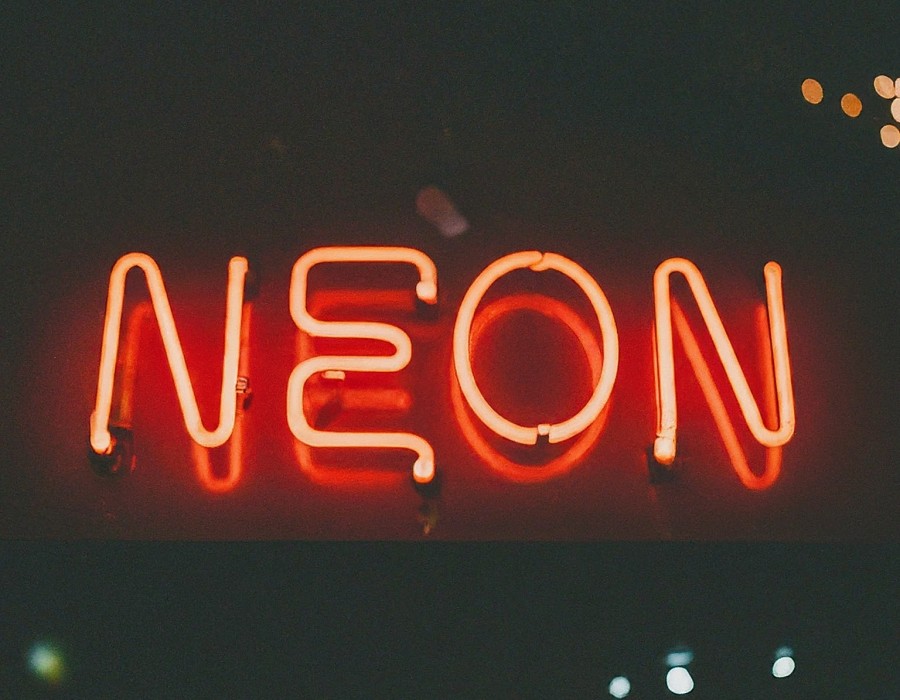Neon lights have illuminated city skylines and captured attention for decades. From the dazzling displays of Times Square to the vintage charm of local shops, neon lights in NYC have become synonymous with urban energy and style. But beyond their aesthetic appeal, neon lights are a fascinating blend of science and art.
This article delves into the heart of these luminous signs, exploring how electricity, gases, and glass combine to create the captivating glow that has become an integral part of our visual landscape.
The Science Behind the Glow
Neon lights operate on a simple yet elegant principle: gas discharge. Inside each neon tube, a noble gas, most commonly neon, but sometimes others like argon or krypton, is contained under low pressure. When an electric current is introduced, it excites the atoms within the gas, causing them to emit light. To understand this process better, delve deeper into each component and step of this process.
The Noble Gases
Neon is the most common noble gas used in these lights, primarily because of its bright, unmistakable red-orange glow. However, other gases can be used to produce different colors. For instance, argon combined with a drop of mercury creates a vivid blue light, while krypton emits a pale white. These variations are achieved by using different gases or by coating the inside of the tubes with phosphor, which glows when exposed to ultraviolet light emitted by the gas.
The Glass Tubes
Glass tubes are the canvas for neon lights. They are carefully crafted by skilled artisans who bend and shape them into the desired forms. This is done using a process called "bombarding," where the tubes are heated and then filled with gas. The shape and integrity of the glass are crucial, as any imperfections can cause the light to be uneven or fail altogether.
The Electrode and Electric Current
At each end of a neon tube, electrodes serve as the entry and exit points for the electric current. When a high-voltage current is applied to these electrodes, it ionizes the gas inside the tube. This means the gas atoms lose electrons and become positively charged ions. The electric current causes these ions to collide with each other and with the remaining neutral atoms, a process that releases energy in the form of light.
How Are Neon Lights Manufactured?
Creating neon lights is an intricate and highly skilled craft. The process begins with selecting high-quality glass tubes, which are then heated and bent into specific shapes by glassblowers. Once shaped, the tubes are thoroughly cleaned and evacuated to remove any air. They are then filled with the chosen noble gas, and electrodes are sealed at both ends. The final step involves applying a high voltage to test the tube and ensure it lights up correctly.
Applications and Evolution
Neon lights have been used for over a century, not only for their striking visual appeal but also for their durability and efficiency. They are most commonly seen in signage, where their bright colors and ability to be shaped into custom designs make them ideal for advertising and decorative purposes. In recent years, advancements in technology have introduced new types of lighting, such as LEDs, which offer greater energy efficiency and flexibility. However, the unique charm and aesthetic of traditional neon lights continue to captivate designers and artists.
The Role of Neon Lights in Urban Culture
Neon lights have become synonymous with urban landscapes, particularly in cities known for their nightlife and entertainment. In places like New York City, Las Vegas, and Tokyo, neon lights are integral to the city’s identity, drawing tourists and adding to the vibrant atmosphere. These lights not only serve practical purposes but also enhance the aesthetic and cultural fabric of these cities.
The Future of Neon Lights
While LED technology is gaining popularity due to its energy efficiency and versatility, neon lights are far from obsolete. They remain a preferred choice for certain applications whose unique glow and artistic potential are unmatched. Moreover, there is a growing appreciation for the craftsmanship involved in creating neon lights, with many artists and designers continuing to explore new creative possibilities. Examples include using neon lights to create intricate art installations and custom signage for boutique shops.
Conclusion:
The captivating glow of neon lights is the result of a delicate balance of science and art. From the choice of noble gases to the meticulous craftsmanship of shaping glass tubes, every aspect of neon light production contributes to its enduring appeal. Whether illuminating a bustling metropolis or adding a touch of retro charm to a modern design, neon lights continue to shine brightly in the world of lighting.





Comments